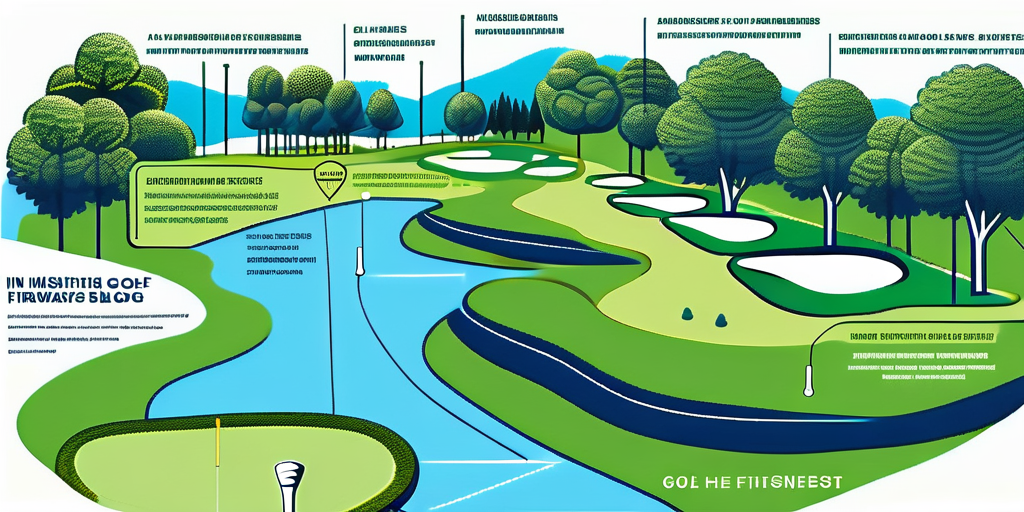
Have you ever thought about diving into the world of golf properties? Whether you’re a passionate golfer or just looking for a unique investment opportunity, golf properties can be a lucrative yet fascinating field. This guide will navigate you through the essentials of investing in golf properties, highlighting what you need to know to get started.
Before jumping in, it’s crucial to grasp what golf properties actually entail. These investments come in various forms, each offering unique potential and challenges. The allure of golf properties goes beyond just the game; it’s about lifestyle, community, and sometimes even luxury.

The charm of golf properties is strong. For many, they represent a retreat from the hustle and bustle of daily life, often set in picturesque locations full of beautiful landscapes. Not only do these properties appeal to avid golfers, but they also attract families, vacationers, and those simply looking for a serene living environment.
Moreover, golf properties can often provide a sense of community and camaraderie among residents and visitors. Be it a majestic resort or a quiet residential area, golf properties frequently serve as gathering spots for social events, tournaments, and leisure activities. The shared passion for golf fosters connections among neighbors, leading to lifelong friendships and a vibrant social calendar filled with events like charity tournaments, holiday celebrations, and themed parties.
In addition to the social aspect, many golf properties offer a range of amenities that enhance the overall lifestyle experience. High-end developments often feature luxurious clubhouses, fine dining options, spa facilities, and fitness centers. These amenities not only attract potential buyers but also create a lifestyle that is hard to replicate elsewhere. The combination of leisure, sport, and community living makes golf properties an enticing option for those looking to invest in a more holistic way of life.
Investing in golf properties isn’t just about picking a picturesque spot; there are several critical factors to evaluate. First and foremost is location. Properties situated near major cities or in tourist hotspots tend to have increased demand, which can lead to higher returns on your investment.
Additionally, consider the type of golf property that appeals to you. Is it a resort, a residential community, or a standalone course? Each type has its own market dynamics, potential revenue streams, and operational considerations. For instance, resort properties may offer opportunities for rental income through vacation stays, while residential communities might provide a more stable, long-term investment through home sales and HOA fees.
Lastly, don’t underestimate the importance of understanding the local real estate market trends, zoning regulations, and community developments that could affect your investment. It’s essential to research the history of the area, including property values and future developments that could either enhance or detract from the attractiveness of your investment. Engaging with local real estate experts and attending community meetings can provide valuable insights that help you make informed decisions about your golf property investment.
Now that you have a handle on the fundamental aspects, let’s delve into the different types of golf properties available for investment. Each of these categories offers its own set of opportunities and experiences.

Golf resorts are perhaps the most luxurious of the options available. These properties often encompass not just the golf course but also accommodations, restaurants, and recreational facilities. Investing in a resort can provide multiple revenue streams, including room rentals, dining, and event hosting.
However, running a golf resort requires substantial capital investment and expertise in hospitality management. A well-managed resort can become a sought-after destination, leading to strong financial returns and a loyal customer base. Additionally, many resorts offer packages that include golf lessons, spa services, and outdoor activities, enhancing the overall guest experience and encouraging longer stays. This diversification can help mitigate risks associated with seasonal fluctuations in golf participation.
Another appealing option is golf residential communities, which combine the charm of living on a golf course with the benefits of community living. These developments often attract retirees, families, and golf enthusiasts who yearn for the lifestyle that comes with their passion.
Investing in residential communities might involve purchasing property within the community and potentially renting it out to gain income. As popularity in these communities grows, so does the value of properties within them, making them an attractive investment opportunity. Many of these communities also feature amenities such as clubhouses, fitness centers, and social events, which foster a sense of belonging among residents. This vibrant lifestyle can not only enhance property values but also create a strong demand for rentals, especially during peak seasons.
If you’re looking for something more unique, standalone golf courses could be your calling. These properties are designed purely for golf and can cater to a wide range of clientele, from casual players to serious enthusiasts.
However, operating a standalone golf course can be challenging due to its reliance on consistent patronage. Factors such as seasonality, economic trends, and customer service quality play significant roles in the success of these operations. Investing wisely in marketing, course maintenance, and customer experience can help optimize returns. Additionally, standalone courses can explore alternative revenue opportunities, such as hosting tournaments, corporate outings, and community events, which can significantly boost visibility and profitability. Emphasizing unique features like scenic views or signature holes can also attract a dedicated following, enhancing the course's reputation and appeal.
When it comes to investments, financial aspects are always at the forefront of decision-making. In the realm of golf properties, understanding initial costs, potential returns, and tax implications can make a significant difference.

The initial costs associated with purchasing golf properties can vary widely. For golf resorts, you might be looking at multi-million dollar investments, while standalone golf courses or residential lots may offer more budget-friendly options.
Aside from the purchase price, consider additional costs such as property taxes, maintenance, marketing, and staffing. A comprehensive financial plan should include all these elements to ensure you are making a sound investment. Moreover, it's crucial to factor in the costs of renovations or upgrades that may be necessary to enhance the property's appeal and functionality. For instance, modernizing facilities or improving landscaping can attract more visitors and increase overall satisfaction, leading to higher revenues in the long run.
The potential returns on golf property investments can be very attractive, especially in well-located and well-managed properties. Golf resorts can yield high profit margins during peak seasons, with additional income coming from events, memberships, and related services.
For residential communities, income can be generated through resale value appreciation and rental rates. Standalone courses may offer memberships and green fees that can also contribute to financial returns, though success is highly reliant on maintaining consistent patronage. Additionally, the rise of golf tourism has opened new avenues for revenue, as more players seek unique golfing experiences. Properties that can cater to this market by offering packages that include accommodations, dining, and golf can significantly enhance their profitability.
Investing in golf properties can have favorable tax implications. Depending on your jurisdiction, operational costs associated with running a golf property may be tax-deductible. Additionally, property depreciation can provide significant tax benefits.
Consulting with a tax advisor who understands the nuances of real estate and investment properties can help you maximize your benefits while ensuring compliance with local regulations. Furthermore, some regions offer tax incentives for developing recreational facilities, which can further enhance the financial attractiveness of investing in golf properties. Understanding these local tax codes and incentives can be instrumental in shaping your investment strategy and ensuring that you leverage every available advantage to optimize your returns.
Like any investment, golf property investments come with their fair share of risks and challenges. Being aware of them helps mitigate potential issues that could arise down the road.
The economic climate can substantially impact the success of golf property investments. Market fluctuations, interest rates, and overall economic health can influence property values and demand. During economic downturns, leisure activities like golfing may see reduced participation, directly affecting revenue.
Investors should stay informed on economic trends and be adaptable to changing market conditions. This can help in making timely decisions that enhance the potential for profitability. Additionally, understanding demographic shifts, such as the aging population or the rise of younger, more diverse golfers, can provide insights into future market demands. Tailoring offerings to meet the preferences of these groups can also mitigate risks associated with market volatility.
Maintaining a golf property requires expertise and resources. From landscaping and upkeep of the course to managing tenant relations in residential communities, operational challenges can arise unexpectedly.
Investors must be willing to put in the time and effort required or hire qualified property management services to ensure that operations run smoothly. A well-maintained property not only preserves value but also enhances customer satisfaction. Moreover, the integration of technology in property management, such as using drones for course maintenance or implementing online booking systems, can streamline operations and improve the overall experience for both staff and patrons. These innovations can also help in reducing long-term operational costs, making the investment more sustainable.
Golf courses can significantly impact local environments, which is why they often face regulatory scrutiny. Issues related to water usage, pesticide application, and habitat preservation need to be carefully managed.
Staying compliant with environmental regulations and maintaining sustainable practices can pose challenges but also provide an opportunity to attract eco-conscious investors and customers. Working with environmental specialists can help create a balance between operational needs and ecological responsibility. Furthermore, engaging in community outreach to promote conservation efforts and sustainable practices can enhance the property's reputation and foster goodwill among local residents. This proactive approach not only mitigates regulatory risks but also positions the property as a leader in environmental stewardship within the golfing community.
In conclusion, investing in golf properties can be incredibly rewarding, both financially and personally. By understanding the various types of properties, considering the financial aspects, and being aware of the challenges ahead, you can make informed decisions that set you on a path to success. Happy investing!